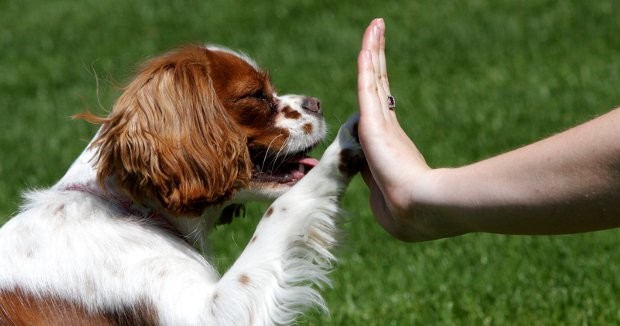When a new puppy moves in, the excitement is great for both the animal and the new dog owners. Pettime will guide you through the basics of puppy training so that your four-legged friend can get used to it smoothly.
Puppy Training: 5 Basic Rules

In order for your puppy to become a balanced and happy four-legged friend, later on, a loving yet consistent upbringing is necessary. It should already be said here: Violence has no place in the upbringing of puppies. Respectful interaction is essential if you want to build a trusting bond with your four-legged friend.
Clear structures
Even if the dog today has little in common with its ancestor, the wolf, its pack instinct remains Even our pets long for structure and clear rules in their coexistence. You want to be able to rely on us. A dog that has too much space may feel compelled to take the helm in hand.
Consequence
In order to create clear structures, you should remain consistent in your upbringing. Your dog will remember what he learned as a puppy. You should therefore not allow your puppy anything that it is not allowed to do in two years’ time – even if it is difficult given the googly eyes.
You should therefore determine in advance where you will draw the lines: Are there taboo areas in the house? Can he go on the couch? Where is your dog while you are eating? Once introduced, your rules should be followed.
Clear Commands
When training your four-legged friend, the clarity of a command is important. If you clearly signal to your darling what you want, the workout will work better. Note that fur noses do not understand sentences, but words and signals. A hand signal, for example, will implement your puppy much faster than detailed instructions on what to do.
Positive reinforcement
So that your four-legged friend learns the house rules as quickly as possible, it is best to work with positive reinforcement. Raising your puppy is not about making your pup obedient, it is about motivating him to do so. This works with small rewards such as treats, pats, or toys if the behavior is desired.
However, this does not mean that measures to be taken in the event of undesirable behavior are completely prohibited – in certain situations they are even necessary. However, you should never use force, just use body language or a loud “no”.
Train at the Right Time
Your four-legged friend will not be receptive to new lessons at any time of the day or night. Make sure the puppy is not too tired, hungry, or playing intensely. In addition, dog children do not have a long concentration span: Limit yourself to short exercises and incorporate small lessons into everyday life.
Raising Puppies: Key Lessons
Once your four-legged friend has understood the basic rules in his new home, the first lessons can start. A dog should learn the following things as a puppy so that there are no problems later.
How to Get Puppies House Trained
Most of the time, after sleeping, playing, or feeding, your pet has to go about its business. So then go outside with your four-legged friend. He makes his little pile or pee outside, praises him, and quickly gives him a treat. The fur nose will quickly learn that peeing is only worthwhile in the garden.
Leash: Get Your Puppy Used to Walk
Many dog owners have problems with keeping their four-legged friends on a leash even years after they were puppies. Therefore, this discipline needs to be practiced particularly well. It’s easier with these tips:
- Use a harness instead of a collar;
- It is best to use a tow line at the beginning;
- Exercise in a quiet place to avoid distractions;
- Connect the leash positively: There is a treat when leashed.
For the first few walks, your puppy will pull on the leash. In such moments, stop until the leash loosens. Then keep running until the animal begins to pull again.
Your four-legged friend will soon understand that pulling on the leash makes it slower. If you stay consistent, he will soon be walking perfectly on a leash.
Puppy Bites and Gnaws: Weaning
Young fur noses love to explore the world and gnaw at things. Cables and poisonous plants are particularly dangerous. The best thing to do is to get these things out of reach.
In addition, young dogs like to bite while playing. It doesn’t do much with the puppy’s little teeth, but it can quickly make the game dangerous for a fully grown dog. In such moments, stop playing with the puppy immediately. Once your dog has accepted this, you can contact him again.
Soon the puppy will understand that biting has a negative impact and will just let it be.
Leaving the Puppy Alone: This is How It Works
Training puppies to stay alone does not make sense until they are twelve weeks old at the earliest. Before that, your baby dog shouldn’t be left to fend for himself.
When the time comes, start slowly. It is best to leave the room for a few seconds and lock the door. Then quickly go back to the room. Your furry friend will understand that you keep coming back.
In the next step, you can leave the house for a short time. Make sure to make the exercise as realistic as possible: take your jacket and keys with you and put them down when you come back. Your dog will use these actions as a guide later. If the exercises work well, you can drag them out a little more each time.
Tip: If your four-legged friend greets you stormily, don’t react too much. This is how he learns that it is normal for you to come and go.

